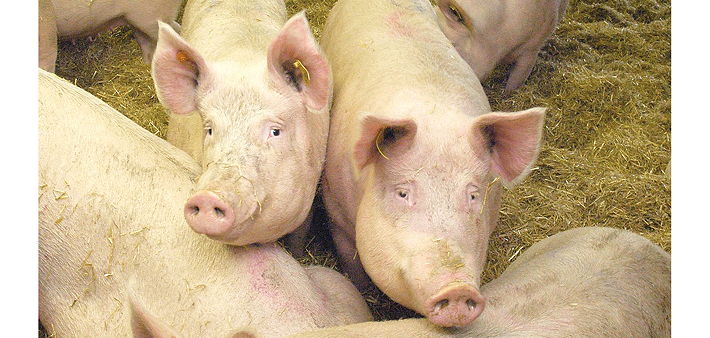Cull sow prices would be at risk under a no deal Brexit, due to the UK industry’s reliance on the German market.
But while a devaluation in cull sows would be unwelcome, this would have a relatively low impact on pig business margins compared with other variables, such as movements in finished pig prices, feed costs and changes to physical performance, according to an AHDB report.
As yesterday’s intervention by Speaker John Bercow further muddies the Brexit outlook, AHDB’s report notes that in the event of a no deal the UK would become a ‘third country’, with WTO tariffs applied to imports and exports.
Most cull sows are currently exported as carcases to Germany for further processing, due to a lack of domestic demand and processing capacity.
The tariff rate on pig carcase and half carcase imports into the EU under WTO rules is €53.6/100kg. Under a no deal a Tariff Rate Quota would enable 15,076 tonnes of fresh, chilled or frozen product to enter the EU at a reduced tariff rate of €26.8/100kg.
This quota has not been used for a number of years, so the full volume could theoretically be accessible to UK suppliers. The UK typically exports nearly 35,000 tonnes of carcases to the EU annually, so the quota could cover around 44% of the volume.
Assuming a UK sow price of around €69/100kg,, the full tariff rate equates to nearly 80% of the current price level. If sow carcase exports to Europe are to continue, the additional tariff burden would probably be borne by the producer, AHDB said.
In order to overcome the full tariff, average farmgate sow prices in the UK would reduce to around €15/100kg, or 13p/kg at the current exchange rate.
“This might seem dramatic, but revenue from cull sow sales actually has relatively little impact on profitability,” the report added.
For example, if cull sow prices during Q4 last year were reduced to 13p/kg, the average finished pig production cost around 2p/kg higher (+1%).
If UK processors could export under the available TRQ, this would lessen the impact, with prices potentially initially at 36p/kg, all other factors remaining equal. This would only be for a few months until the quota was exhausted, however.
Assuming that 44% of sows could be exported at the reduced tariff rate, sow prices would average around €22/100kg, or 19p/kg, based on the current estimated sow price.
However, the report notes that other factors would come into play. For example, a devaluation of sterling would make UK sow prices cheaper from an EU perspective, while additional trade facilitation costs could place more downward pressure on domestic sow prices.
There could be also be a delay in the UK gaining access to the EU market as it is not currently an approved third country. The disruption might add around 3p/kg onto finished pig production costs, compared with pre-Brexit levels.
The report stressed that the impact on cull sow prices should be put in context. While sow sales ranged from between £8,000 and £17,000 per annum, over the past five year for an average 250-sow farrow to finish farm, income from cull, for the same farm. income from finished pigs ranged between £550,000 and £830,000/annum.
“Movements in finished pig prices will be far more important, and with half of UK pig meat exports still destined for the EU, sow carcases aside, more pertinent questions are around balancing supply and demand for prime pork products,” the report concludes.




